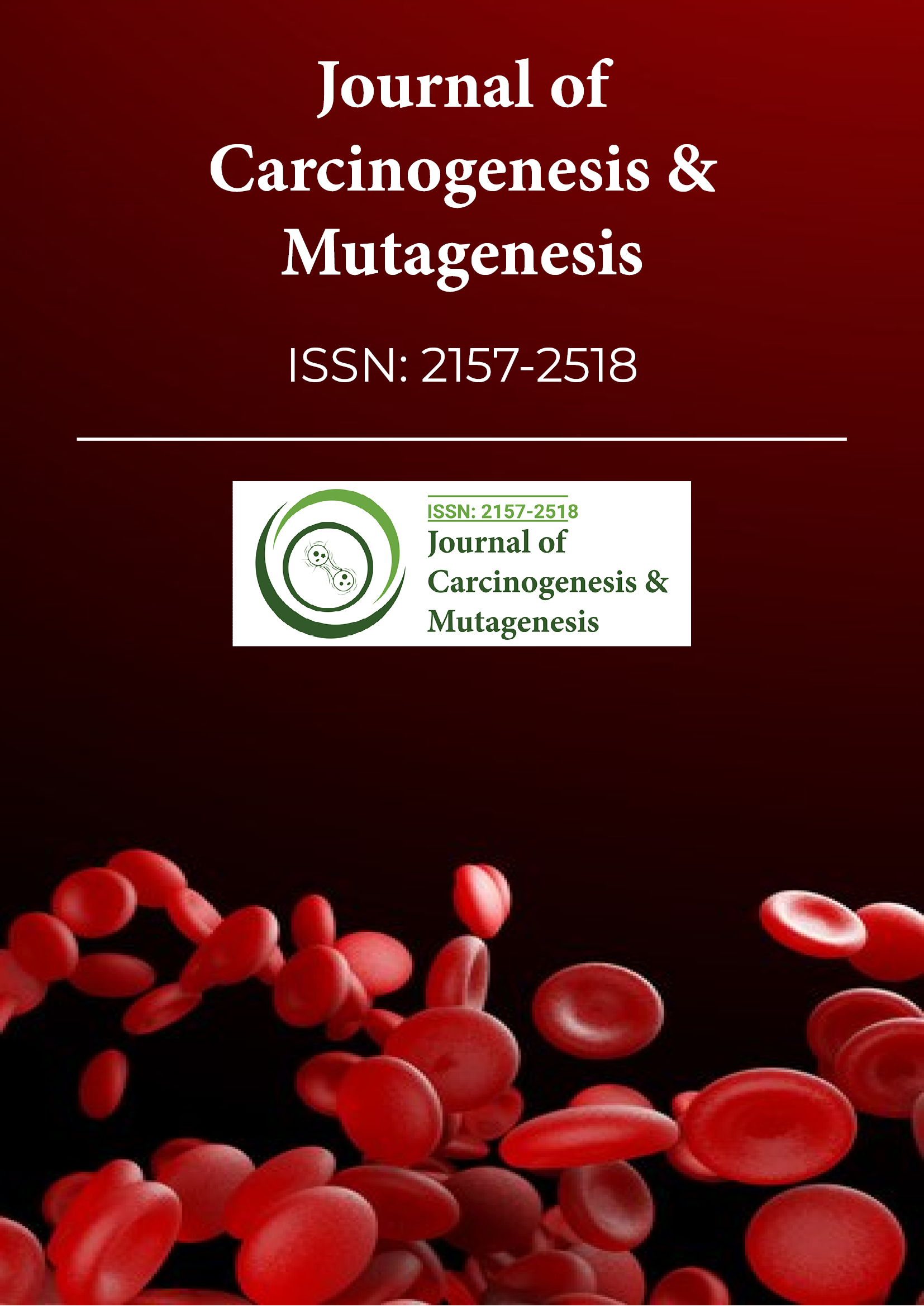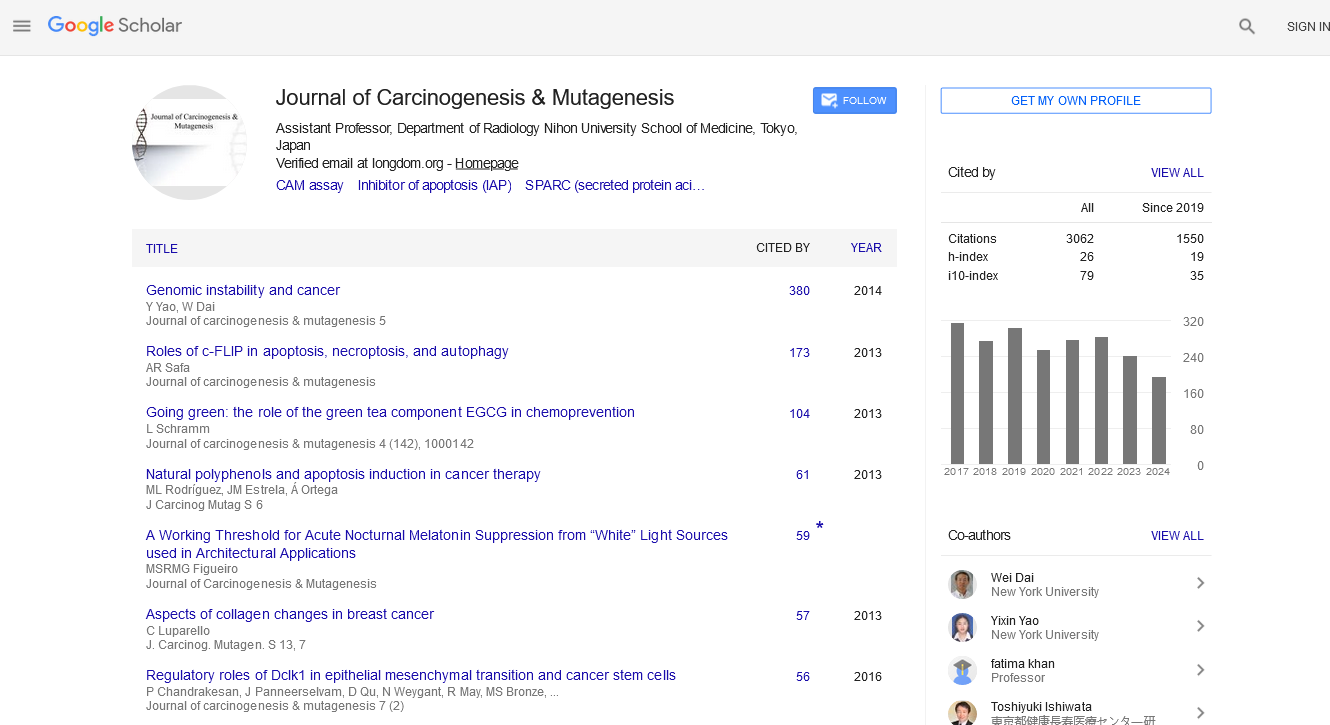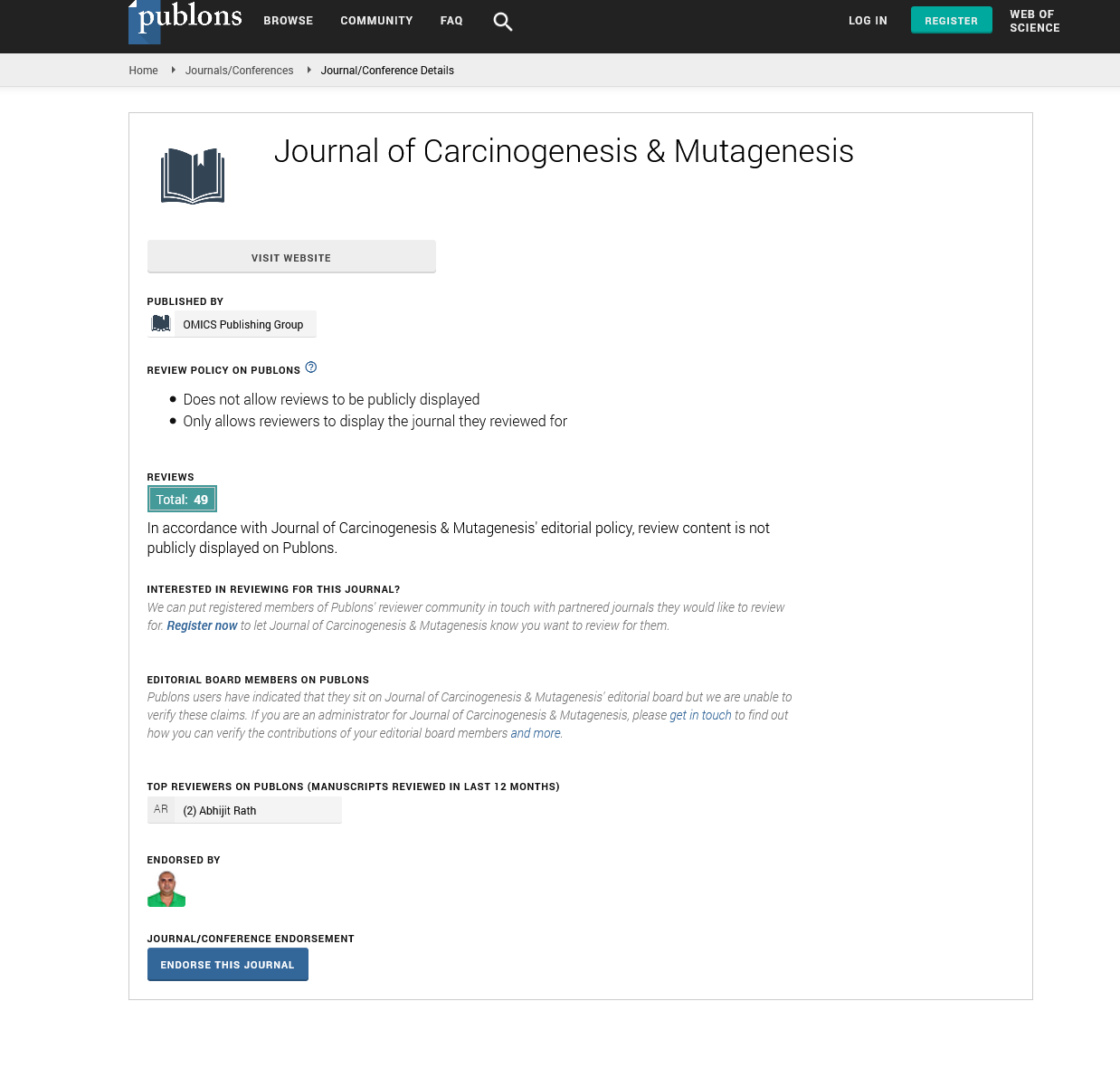Indexed In
- Open J Gate
- Genamics JournalSeek
- JournalTOCs
- Ulrich's Periodicals Directory
- RefSeek
- Hamdard University
- EBSCO A-Z
- OCLC- WorldCat
- Publons
- Geneva Foundation for Medical Education and Research
- Euro Pub
- Google Scholar
Useful Links
Share This Page
Journal Flyer

Open Access Journals
- Agri and Aquaculture
- Biochemistry
- Bioinformatics & Systems Biology
- Business & Management
- Chemistry
- Clinical Sciences
- Engineering
- Food & Nutrition
- General Science
- Genetics & Molecular Biology
- Immunology & Microbiology
- Medical Sciences
- Neuroscience & Psychology
- Nursing & Health Care
- Pharmaceutical Sciences
Tumor safety and aesthetic study of endoscopic breast reconstruction
5th World Congress on Breast Cancer
July 14, 2025 Webinar
Du zhenggui
Science and Technology Department of Sichuan Province, China
Scientific Tracks Abstracts: J Carcinog Mutagen
Abstract:
Background: Minimally invasive breast reconstruction has been scarcely performed on inpatients, let alone on patients discharged within 24 h. This study aims to assess safety and aesthetic outcomes of a novel technique, namely reverse-sequence endoscopic nipple-sparing mastectomy (R-E-NSM) and direct-to-implant breast reconstruction (DIBR), for patients discharged within 24 h. Methods: This prospective study was conducted from July 2020 to April 2023, enrolling consecutive patients who underwent DIBR following R-E-NSM and were discharged within 24 h. Data were analysed to evaluate the safety and cosmetic outcomes of this technique. Clinical factors were analysed in relation to complications. Results: In this study, 214 patients underwent 237 R-E-NSM and DIBR procedures, with a mean operation time of 164.7±45.3 minutes. During the median follow-up of 15 months, major and minor complication rates were 2.8 per cent and 13.1 per cent, respectively. Three patients (1.4 per cent) experienced implant loss and 18 patients (8.4 per cent) suffered an infection. In the final multivariable model, diabetes (odds ratio (OR) 7.84, 95 per cent c.i. 1.22 to 50.54) was an independent risk factor for a total complication, and diabetes (OR 20.18, 1.40 to 291.84) and previous ipsilateral breast surgery (OR 15.28, 2.33 to 100.40) for a major complication. Cosmetic results were evaluated good or excellent in 198 patients (92.5 per cent). Adjuvant radiation therapy (OR 8.25, 2.53 to 26.93) and resection weight (OR 0.60, 0.37 to 0.96) were correlated with an implant-related complication. Conclusion: R-E-NSM and DIBR was safe and feasible on patients discharged within 24 h.
Biography :
I have published over 30 papers in international and domestic journals, with more than 20 of them as the first author or corresponding author. I contributed to the compilation of a monograph on endoscopic breast surgery and have led six research projects funded by the National Natural Science Foundation and the Science and Technology Department of Sichuan Province.


